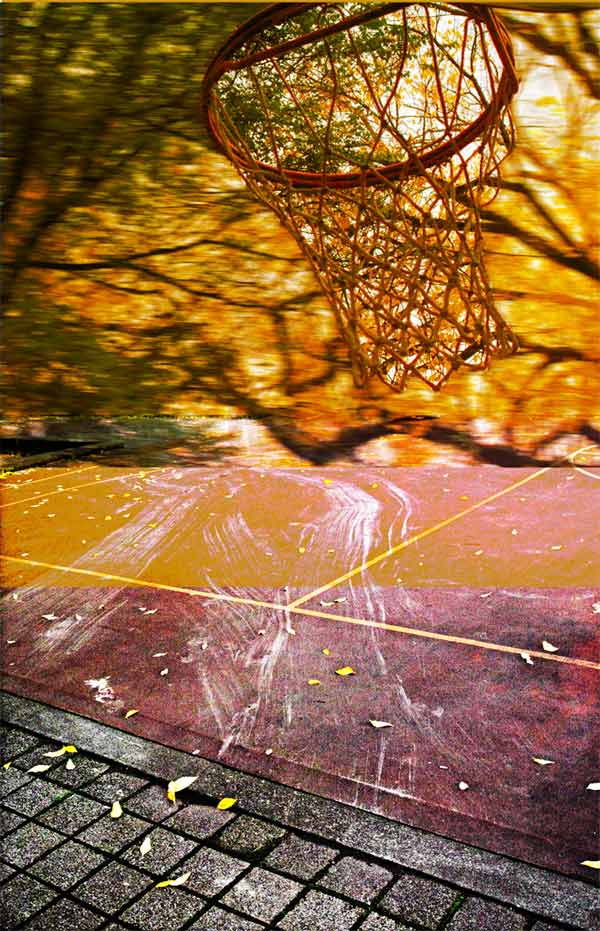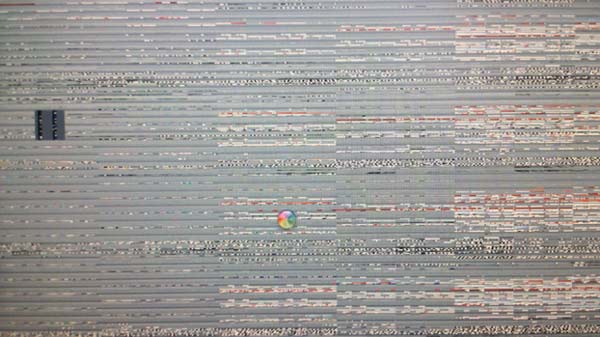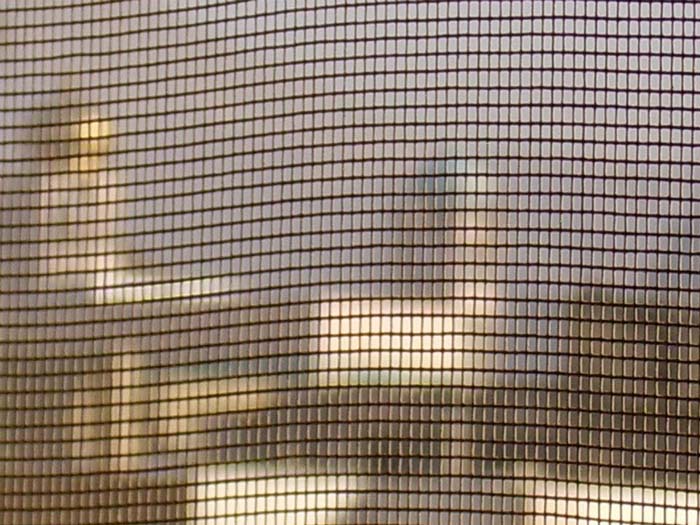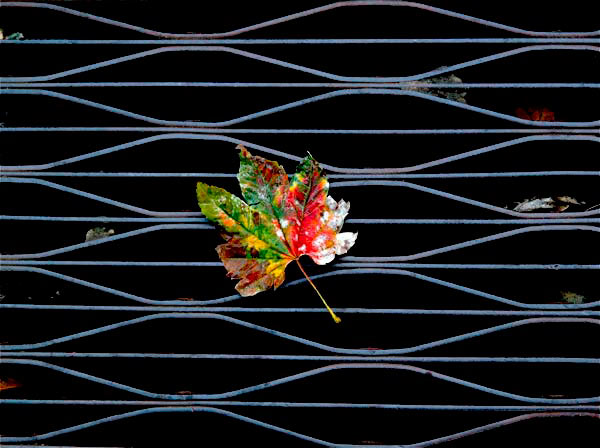Twenty years ago I wrote a story in which a man in San Francisco leaves his lover’s bed at 3 AM to go into his basement and talk to a woman in Denmark “on the Web.” My readers frowned and asked, “The Web? What is that? You’ll have to footnote that because no one will know what you’re talking about—we certainly don’t.” It may be difficult to believe, but there was such a quaint and innocent time and I was privileged to be, for ten minutes, ahead of the curve. I did not know, as I put the story away unfinished, that the footnote was in fact the story.
When that man “logged on” he entered the beginnings of a metaphor most of the modern world lives in now. He looked transfixed at the picture of a woman’s bare shoulder and the pink and black tattoo winding down her back. He wrote sentences, and sentences came back. He was “here” and he was simultaneously over there in a way he had never experienced before. He went back to bed just before sunrise.
Sunrise, coincidentally, is when the original prototype of the Web becomes most visible. The highwire paths run from hydrangea to pine, from the fern to the apple tree; the circular weavings hang briefly intact. A friend told me of waking on an August morning in a fugue state, trying to puzzle out a difficult problem. She walked into the garden and the sight of spider webs strung with dew and shimmering like shields stunned her with beauty. She walked a few paces to the left, and they vanished. She walked to the right and they reappeared. And so for a long while she walked back and forth observing as the webs came and went depending on the light. And then she turned around and walked right into one she could not see, and it broke.
This struck me as metaphorically accurate on many levels, and stayed with me so strongly that when, a few weeks later I walked into my own spider web, even though I am a confirmed arachnophobe and shrieked hysterically, I did not immediately wipe the web off my glasses. Instead I took my glasses off and marveled, for the web had transferred perfectly to the lens. If I wanted to I could let the pattern remain indefinitely, and walk around the world quite literally seeing “through” the web.
Since that moment I have been thinking about the way we live in metaphor, and how, depending on whether or not we actually see it, our world changes in response. Words shape our consciousness and visa versa. They are neither incidental nor random. When we go on the Web it offers us a choice of roles: we navigate, following threads; we get lost, falling through the spaces; or we are “caught in the Net,” prey just as the fly that hangs in a pale skein outside my backdoor. The words are not innocent. A “net” is only welcome to the hunter or the trapeze artist or the person dangling from a bridge. The butterfly and the fish have quite a different perspective.

As I looked through my glasses I became acutely aware of the space between threads and how tenuous the threads appeared. I reflexively thought of checking my email, (because I think of checking my email pretty much all the time, even in my sleep), and it occurred to me that the space between emails is much bigger than the thread of connection they presumably represent. The waiting-space between communications, the color of it, the length of it, the texture of it, defines emotional space as much as the actual content of the message. Of course human communication has always contained waiting. And the postal service and couriers on white horses and pigeons have all been involved in various forms of alleviating and extending the torment. In any voice conversation there is a game of toss in which one person speaks and the other replies, and the length of waiting between each toss reflects the emotional connection, nervous, heated, thoughtful, close, indifferent. But unlike web-mediated communication the response is fairly immediate. At a party you don’t usually ask someone “How are you?” and expect them to walk out the door and come back three months later and give you the answer.
Here I must pause to share a moment of absurd but true synchronicity. As I wrote this very sentence, sitting in Café Vita, I checked Facebook, where a message blinked its urgent “come hither” of possibility. On January 26 at 8:45 AM in 2009 I had sent a message to someone, we’ll call him “Mark.” He had finally replied at 8:56 October 18, 2012, nearly four years later, a startling illustration of the infinitely confounding time and distance of cyberspace. “Hey,” said Mark, “I just got this. Hope all is well.” Needless to say I had stopped waiting for Mark to reply quite a while ago. But at any given moment an increasingly large part of my brain is given over to waiting, and managing the public relations of waiting. I know I am not alone in this. I have had dozens of conversations with people struggling with the complexity of what to do when someone doesn’t “get back to you” and when or if you write again, or text if you emailed, or email if you texted or God forbid pick up the phone or maybe cross that person off your list or spill coffee on their laptop the next time you see them.
In this Web in which we are living the threads are thin and often invisible, and the emotional space between them is very wide. For every note that gets through, for every tweet or text, there is a hunger for more, and a potential micro-story about the calibrations of time and distance. The recent crop of books on how our brains are being rewired by technology verify this. The serotonin uptake center gets very busy when it comes to the inbox. It spikes at the appearance of each new piece of mail. A “one-click” Like on Facebook generates modest serotonin, while a public conversation on your Wall with significant details (“love love loved the silver bustier!!”) can make the neurotransmitters go wild with endorphins. If there is nothing blinking or winking, and the human organism has gone through the hopeful ritual of checking their device– the serotonin level sinks.
The whole process repeats itself hundreds of times a day.

Although it has not yet been discovered, I am willing to bet an entire new cerebral cortex is in the works: the “waiting” cortex. Those with a large waiting cortex suffer: they want. Those with a small cortex suffer less because they protect themselves with a collective shrug, allowing less and less investment in both communication and expectation–and thus is born the low-affect stare of the “whatever” generation. Social Aspergers is a form of survival.
Since I would like to stay high-affect and in some measure hungry, without turning into the hungry ghost of Buddhist parables, I have taken as my koan the subject of the space between. To live as consciously as possible in metaphor. And to take nothing for granted. The year I moved away from home and into my first apartment, I had a vivid dream. I found myself in outer space, staring out the window of the space shuttle. The architecture of badminton melded into that of NASA, resulting in the sense of floating both in solid metal and the fragile envelope of a plastic shuttlecock. As I looked out and counted stars I was racked with panic. And a voice said, “You really can’t deal. You better learn to meditate.” I woke up in the dark and the next day went up to the first calm person I saw and asked them for the secret.
Each day this Autumn my practice is looking at the space between. The sky scissored by geese. The blurred glimpse between boxcars. The silence after words have been said, filled by the sound of raking leaves and then more sentences and leaves, and the space between autumn and spring in which the leaves will become transparent like leaded glass. I remember suddenly the great aqueduct of Lisbon, and the monumental view through the arches. How when language fails in a foreign country distance vanishes between strangers with a smile and a helpless laugh. When I pick up my pen to do calligraphy I go back to the very beginning of things, the white paper, and keep my eye on the emptiness that makes an n an n. In this frame of mind hemming a pair of jeans and holding up the needle becomes a quiet revelation. I push the thread through, I tie its knot, I make the stitches, each one held in place by the space between.


Corbet Curfman says
Thank you Iskra. Your thoughts and images elegantly weave through tangle of ideas that I’m not sure I had ever linked together. This will keep me contemplating for quite a while.
Iskra says
Thank you for your words Corbet. I’m glad this piece spoke to you.
Obadinah says
Lyrical travels through meaning and culture. Beautifully done, visually rich. My inner world just went a little deeper. I am glad that you write.